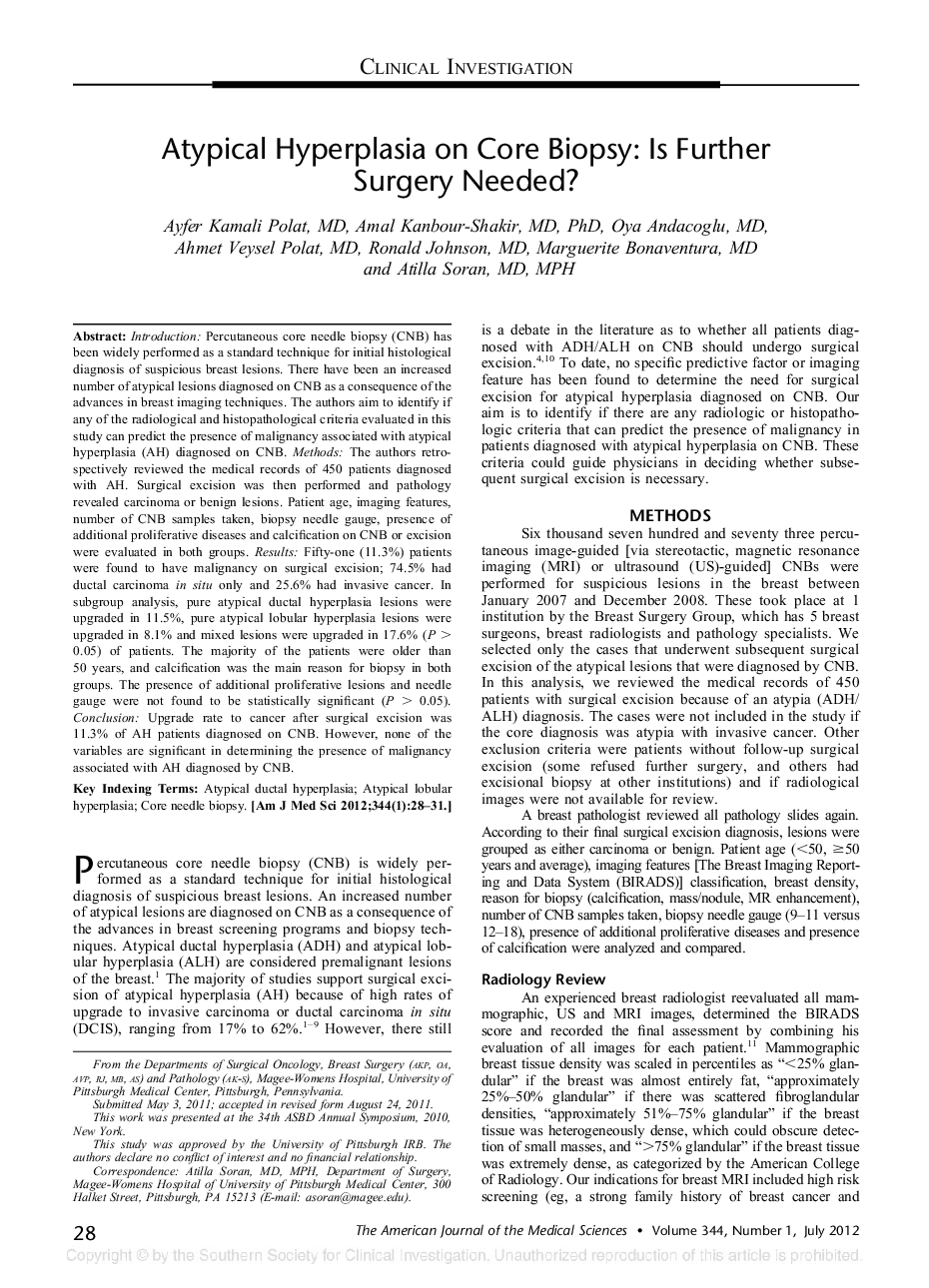| کد مقاله | کد نشریه | سال انتشار | مقاله انگلیسی | نسخه تمام متن |
|---|---|---|---|---|
| 2863551 | 1573171 | 2012 | 4 صفحه PDF | دانلود رایگان |

IntroductionPercutaneous core needle biopsy (CNB) has been widely performed as a standard technique for initial histological diagnosis of suspicious breast lesions. There have been an increased number of atypical lesions diagnosed on CNB as a consequence of the advances in breast imaging techniques. The authors aim to identify if any of the radiological and histopathological criteria evaluated in this study can predict the presence of malignancy associated with atypical hyperplasia (AH) diagnosed on CNB.MethodsThe authors retrospectively reviewed the medical records of 450 patients diagnosed with AH. Surgical excision was then performed and pathology revealed carcinoma or benign lesions. Patient age, imaging features, number of CNB samples taken, biopsy needle gauge, presence of additional proliferative diseases and calcification on CNB or excision were evaluated in both groups.ResultsFifty-one (11.3%) patients were found to have malignancy on surgical excision; 74.5% had ductal carcinoma in situ only and 25.6% had invasive cancer. In subgroup analysis, pure atypical ductal hyperplasia lesions were upgraded in 11.5%, pure atypical lobular hyperplasia lesions were upgraded in 8.1% and mixed lesions were upgraded in 17.6% (P > 0.05) of patients. The majority of the patients were older than 50 years, and calcification was the main reason for biopsy in both groups. The presence of additional proliferative lesions and needle gauge were not found to be statistically significant (P > 0.05).ConclusionUpgrade rate to cancer after surgical excision was 11.3% of AH patients diagnosed on CNB. However, none of the variables are significant in determining the presence of malignancy associated with AH diagnosed by CNB.
Journal: The American Journal of the Medical Sciences - Volume 344, Issue 1, July 2012, Pages 28–31